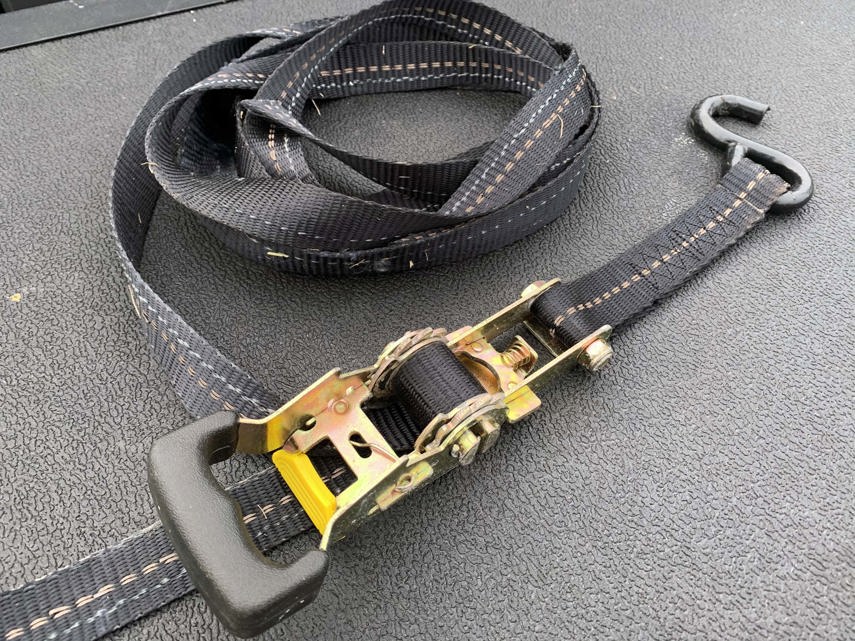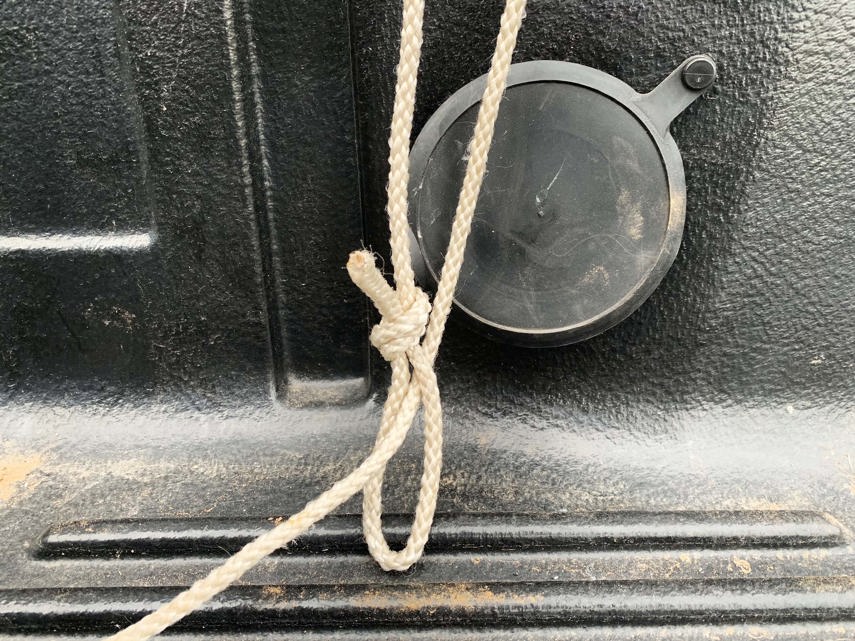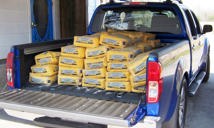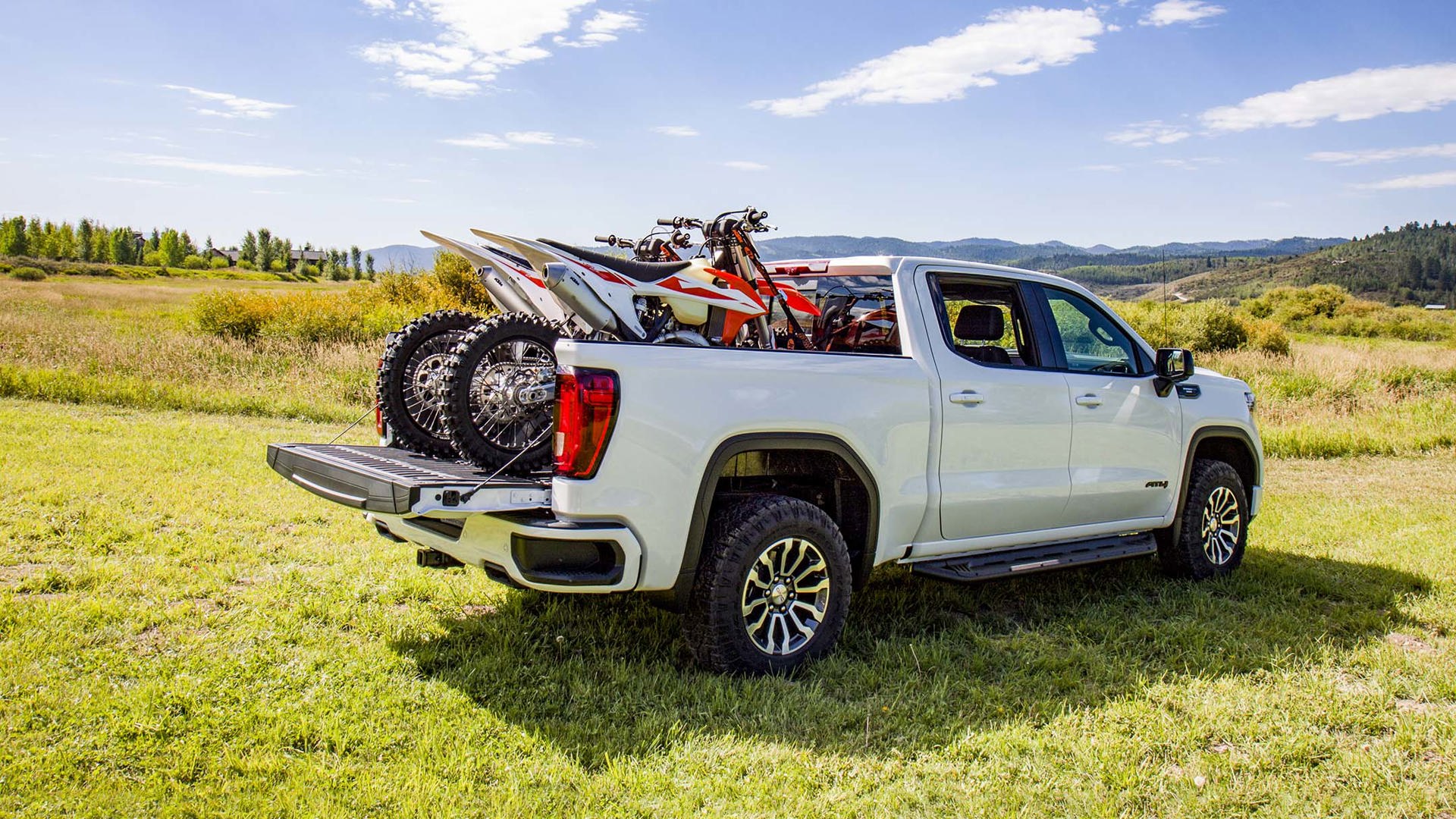If you’ve spent any time at all on our nation’s highways, you’ve seen it: poorly secured items flapping in the breeze like a forlorn sailboat jib. There’s a reason that mattress has been on the side of the road for a week – its owners didn’t know it was missing until they got to their new apartment.
Not properly securing cargo in your truck creates a possible safety hazard for other drivers and can earn you a hefty ticket and fine from your local constabulary.
That’s why we’ve taken it upon ourselves to help rid the roads of rogue detritus. Using a 2018 GMC Sierra as our pack mule, we loaded up – and properly secured – a variety of materials in the hopes you’ll learn a thing or three about properly securing your cargo.
One more thing: it is required, by law, to mutter “That’s not going anywhere” after tightly tying a rope or forcefully closing a ratchet strap. Failure to do so will result in a visit from your father who will invariably tell you you’re doing this all wrong.

Ratchet Straps
Speaking of, let’s start with these tie-down assists. Their ubiquity sprung up overnight, with several cubic acres of the things appearing alongside off-brand noodles at discount stores across the country. Let’s make one thing clear from the start: do not cheap out on ratchet straps. Poor-quality examples can strip their grip teeth and shatter their internal mechanisms, causing calamity on the road when the contents of your dorm room spill onto the roadway.
Lift the ratchet strap’s metal handle and open the buckle a full 180 degrees. This will allow the webbing part of your strap to slide easily through its tongue slot, which is technically called a tension device. Slide the webbing through the tension device until it is the right length to reach over your cargo and secure one hooked end into a tie-down point in the truck bed.
Do the same for the other hooked end and close the metal handle (the one that’s currently open 180 degrees). This triggers the ratcheting function, allowing one to cinch the webbing and secure their cargo.

P.O.R.K. – Plain Old Rope Knots
Some of the best advice I have ever received – in terms of tying stuff down, at least – was “If you can’t tie knots, tie lots.” This old saw has saved more than one Christmas tree from tumbling atop the Guy family vehicle on the way home from a u-cut farm.
Joking aside, the advice is sound. If all one has on hand is a bit of rope with which to secure their cargo, it is never a poor idea to simply tie plenty of basic knots in an attempt to keep items from shifting like a LeMans driver on race day.
If nothing else, learn to tie a bowline knot (the image shows a “running bowline knot”, made by threading the free end of the rope back into the eye of the bowline knot). This allows one to make a fixed loop at the end of a rope, something which is very handy when latching items to the back of one’s pickup truck. No matter your knot-tying prowess, make sure the rope is not frayed or damaged lest disaster strike in the form of apartment furniture tumbling onto the highway.

Load Assessment
It’s important to make sure one does not exceed the truck’s load capacity. The payload rating is the maximum amount of weight it can carry, including passengers, meaning one needs to account for their large mammal friends when figuring out how much gear they can carry. A 2019 Ford F-150 SuperCab 4x2 with the new Powerstroke Diesel has a payload rating of 1,980 lb, for example. This means owners can pack 1,380 lb of stuff in the box if they have 600 lb of passengers aboard, not an unreasonable assumption.
A good approach to load management is to pack the heaviest items toward the front of the truck bed, near the cab. This moves the weight inboard and helps stabilize the truck. Go stand in the middle of your coffee table and then on the end of your coffee table to see what we mean. If your load is long (like lengths of lumber), be sure to tie a red safety flag onto its end to warn drivers of the protrusion. It’s considerate and, you know, the law.

Consider Both Sides
Whatever method one uses to secure items to a truck bed, securing a rope (or ratchet, or bungee) to both sides of the load is important beyond measure. While this may seem elementary, far too many mattresses have gone flying down the highway thanks to their movers lashing a single tie-down across its centre.
It never hurts to weave the rope or webbing of your tie-down device through the item you’re hauling, such as the bicycle shown above. This applies force on multiple sides of the object, cinching it down into the truck bed like a bro cinches a flat brim onto his head. There’s less chance of dropping a dozen beer if you’re holding the box by its handles; the same principle applies here.

Get Help If You Need It
There’s nothing wrong with seeking help if you’re unsure about the finer points of making sure your truck’s cargo doesn’t take flight at the first opportunity. Ring up a buddy who’s done this before or search for a reputable moving company in your area. Spending a few bucks on a pro sure beats having to make an insurance claim when that ottoman takes flight.
Be safe out there, kids.

